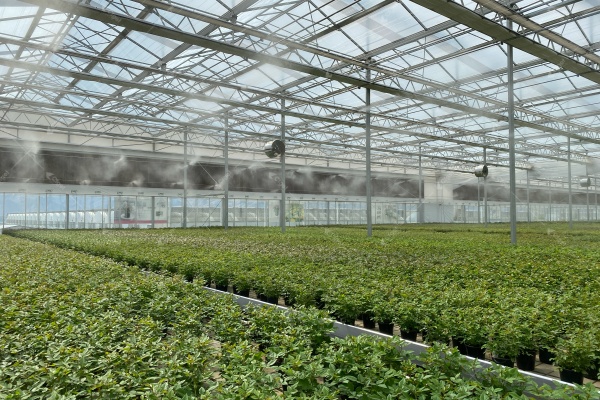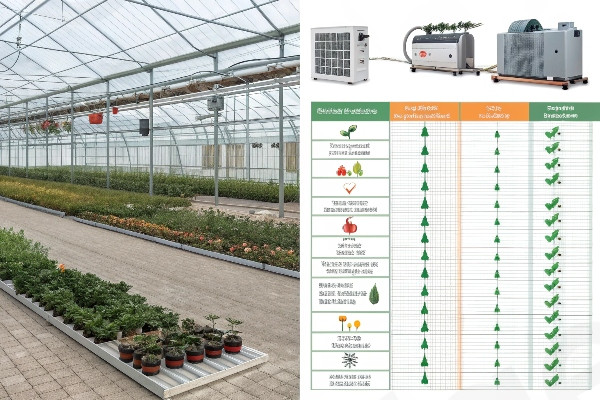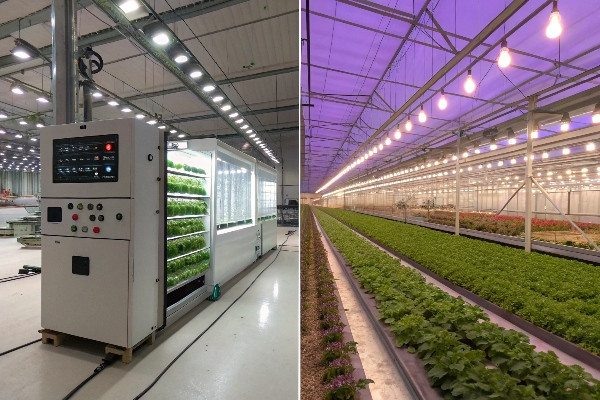Selecting a commercial greenhouse is overwhelming. The wrong choice wastes money and limits your crop potential. A strategic approach ensures your investment aligns perfectly with your goals and your environment.
Choosing the right commercial greenhouse involves matching your specific crop needs and climate to the correct structure, materials, and technology. This guide explores over 20 types, from simple tunnels to advanced vertical farms, helping you make an informed, profitable decision for your business.
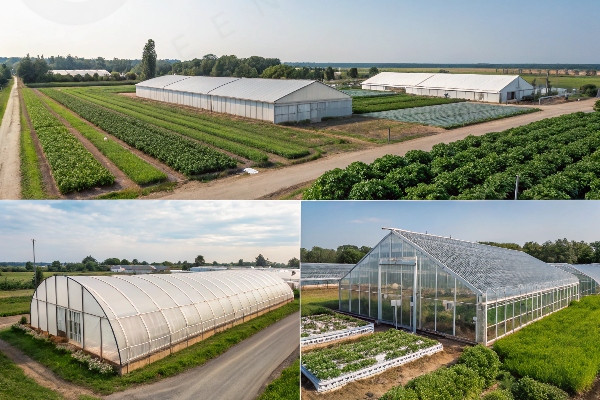
The idea of a single "best" greenhouse is a myth. I have spent over 29 years in this industry, and if there is one thing I have learned, it is that success comes from customization. A greenhouse is not just a building. It is a tool designed for a specific job in a specific place. What works for a tomato grower in the Netherlands will not work for a flower nursery in Thailand. The perfect greenhouse for you is one that is designed from the ground up, based on your crops, your local climate, and your business plan. It is a non-standardized solution, a unique ecosystem built for your success. This journey starts not with structures or materials, but with a simple question: what are you trying to achieve?
Don’t Miss:——Commercial Hydroponic Greenhouse Systems: How Do Design, Construction, and ROI Interconnect?
You might like:——What is a Smart Greenhouse? The Ultimate Guide to Automated Growing
Defining Your Growing Goals: Features and Choices for Different Use-Specific Greenhouses?
You want to grow high-value crops, but a generic greenhouse will not cut it. Mismatched features lead to poor yields and operational headaches. Defining your goals first is the key to success.
Start by defining your primary use. A research greenhouse needs precise environmental separation, while a nursery requires hardening-off space. A commercial vegetable farm prioritizes production efficiency and automation. This focus dictates every subsequent choice you make, from structure to systems.
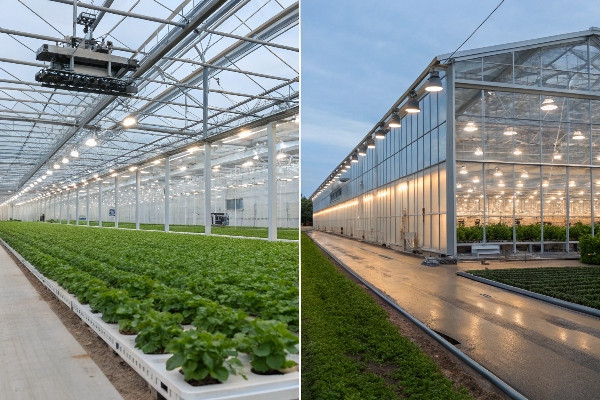
I remember working with two very different clients at the same time, and their projects really highlighted this point. The first was a university research institute. They needed to study the effects of slight environmental changes on sensitive plant genetics. For them, we designed a series of small, completely separate greenhouse bays. Each bay had its own independent climate control system, so they could run multiple experiments at once without any cross-contamination. Their priority was not total yield, but total control and isolation.
My second client was a large-scale vegetable producer. His goal was the exact opposite. He needed maximum yield at the lowest cost per unit. For him, we designed a massive, multi-span complex covering several hectares. The entire space was a single, uniform environment, optimized for one specific crop. We focused on automation for irrigation and climate control to reduce labor costs and ensure consistency across the entire facility. Both clients were successful, but they needed completely different tools to achieve their goals. This is why the first conversation we have with any client is never about the greenhouse itself. It is always about their vision and their business.
The purpose of your greenhouse is the foundation of its design. For example, a commercial nursery that prepares young plants for outdoor planting needs a structure with excellent ventilation and retractable roofs. This helps harden the plants off by gradually exposing them to the outside environment. On the other hand, a farm growing vine crops like tomatoes or cucumbers needs a tall structure to accommodate the vertical growth of the plants. They also need strong trellising systems built directly into the greenhouse frame. For a grower of leafy greens using hydroponics, the design might focus on integrating NFT or DWC systems, with less emphasis on soil and more on water management and precise nutrient delivery. Every goal has a unique set of design requirements.
What you want, we have it here:——Our greenhouse structure
Comparing Greenhouses by Primary Use
| Greenhouse Use | Key Features | Primary Goal |
|---|---|---|
| Commercial Production | High level of automation, uniform environment, large open spaces, efficient workflow for planting and harvesting. | Maximize yield and quality while minimizing operational costs per unit of produce. |
| Research & Development | Multiple small, isolated compartments with independent climate controls, high-precision sensors, blackout capabilities. | Provide a controlled, repeatable environment for scientific experiments and data collection. |
| Nursery & Propagation | Excellent ventilation, retractable or rolling roofs, integrated irrigation and misting systems, space for benches and trays. | Germinate seeds and grow healthy young plants, often hardening them for sale or transplant. |
| Retail Garden Center | Aesthetically pleasing design, wide walkways for customers, attached headhouse for sales and storage, good natural light. | Create an attractive shopping environment to display and sell plants directly to consumers. |
Greenhouse Structure Selection Guide: Considerations for Freestanding, Multi-Span, and Special Structures (e.g., Solar Greenhouses)?
The frame is your greenhouse’s skeleton. A weak or ill-suited structure risks collapse in bad weather. Choosing the right one provides a secure foundation for your business’s future.
Select a structure based on your land, budget, and expansion plans. Freestanding tunnels are affordable and simple. Gutter-connected multi-span structures maximize growing area and efficiency. Special structures like solar greenhouses are designed for specific energy-saving goals in colder climates.
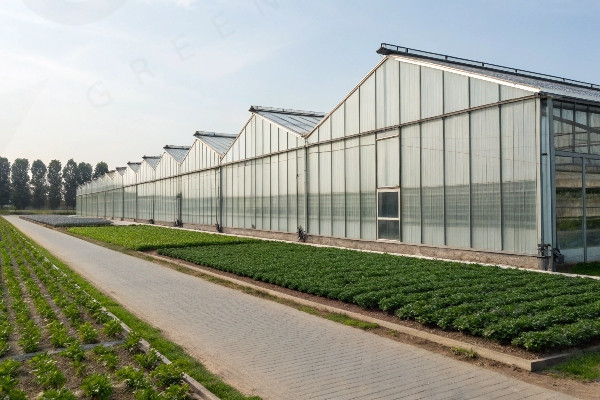
The choice of structure is a balance between your ambition and your reality. A few years ago, we worked with a young farmer just starting his business. He had limited capital but a decent plot of land. He chose to start with three freestanding Quonset-style greenhouses. They were affordable to build and allowed him to grow three different crops in separate environments. As his business grew, he added more tunnels one by one. This modular approach worked perfectly for his budget and expansion plan.
In contrast, we designed a facility for a large agricultural corporation in Europe. They had a huge amount of capital and needed to produce a massive volume of peppers from day one. For them, a gutter-connected, multi-span structure was the only logical choice. By connecting the greenhouses at the gutters, they eliminated the wasted space of interior walls. This created a vast, open area that was perfect for automated boom sprayers and harvesting carts. It was a single, highly efficient food factory. Both structures were the "right" choice, but for completely different operational scales and financial situations.
Sometimes, the climate dictates a truly unique structure. I will never forget a project in a remote part of Central Asia with freezing winters but clear, sunny days. We recommended a Chinese-style solar greenhouse. This design has a solid, thick wall on the north side, usually made of earth or concrete. During the day, this wall absorbs solar heat. At night, it slowly radiates that heat back into the greenhouse, drastically reducing the need for fossil fuel heating. The south-facing side is a simple, angled covering. It is a brilliant, low-tech solution that is perfectly adapted to its environment. This is a great example of what I mean by customized solutions. It is about taking a basic structural concept and adapting it to create a sustainable and profitable ecosystem for the grower.
Comparing Common Greenhouse Structures
| Structure Type | Key Advantages | Key Considerations |
|---|---|---|
| Freestanding (Tunnel/Quonset) | Lower initial cost, easy to build, allows for separate growing environments. | Less space-efficient, higher heating costs per unit area due to more exposed surface area. |
| Gutter-Connected (Multi-Span) | Maximizes land use, more energy-efficient to heat, allows for large-scale automation. | Higher initial investment, a single environment for the entire structure (less crop diversity). |
| Chinese Solar Greenhouse | Excellent passive solar heating, significantly reduces winter energy costs. | Requires a specific east-west orientation, only suitable for climates with cold but sunny winters. |
| A-Frame or Gothic Arch | Stronger for handling heavy snow loads, provides more overhead space for tall crops. | More complex and expensive to build than a simple Quonset tunnel structure. |
Impact of Roof Types on Greenhouse Performance: Venlo, Dome, Sawtooth, etc.?
Your greenhouse roof seems simple, but it controls everything. The wrong roof shape can trap heat, reduce light, or fail under stress. Understanding roof design is crucial for success.
The roof type directly impacts light transmission, ventilation, and structural load capacity. A Venlo roof is ideal for temperate climates and glass coverings. A sawtooth roof provides excellent natural ventilation in hot climates. A dome offers structural strength for heavy loads.
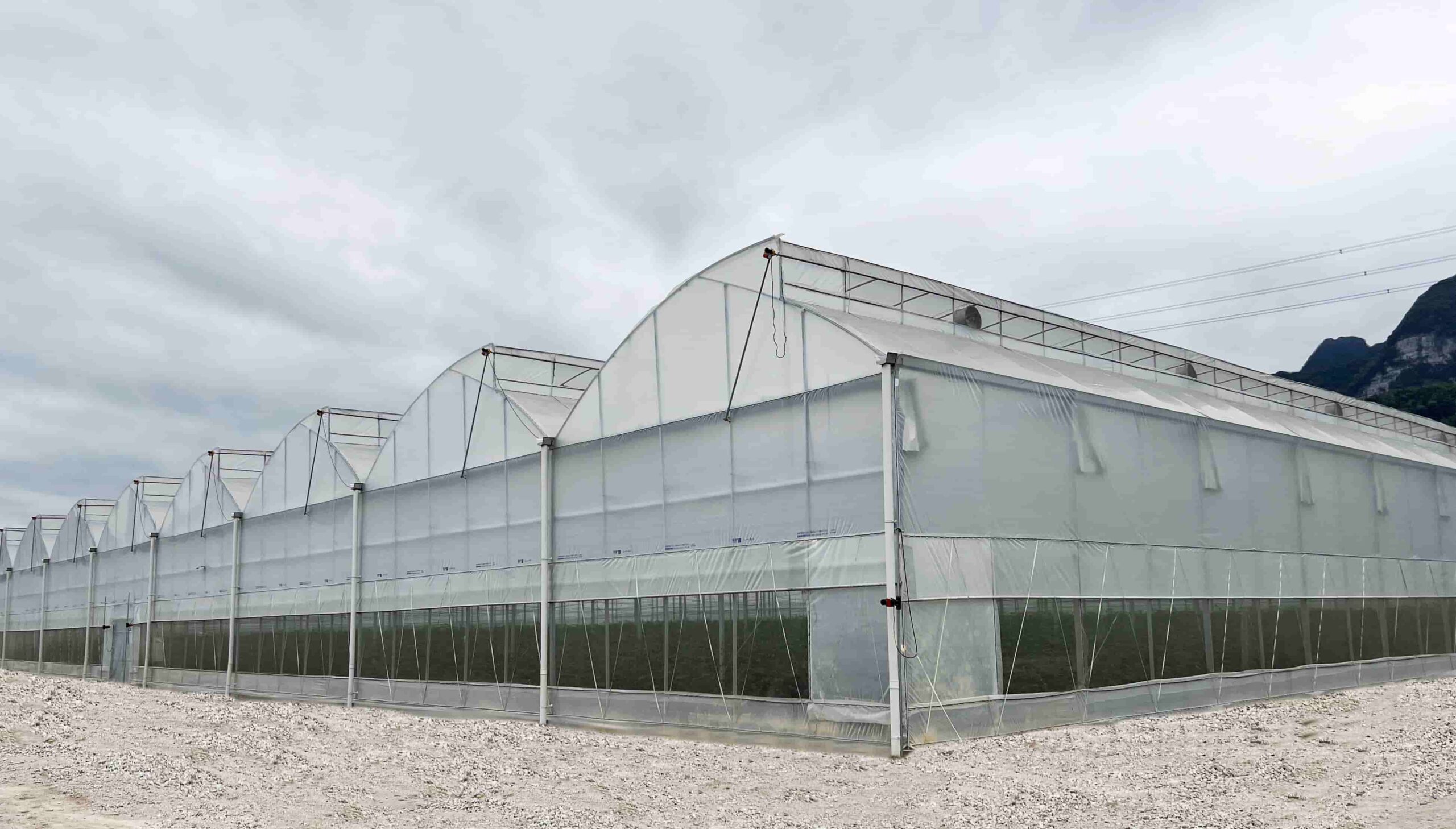
The roof is the most important surface of the greenhouse. It is the interface between your controlled environment and the unpredictable world outside. Its shape determines how it handles light, wind, rain, and snow. A client in the Netherlands, a country famous for its greenhouse technology, would almost certainly choose a Venlo-style roof. This design uses smaller panes of glass and more support bars, creating a very strong structure that maximizes light transmission, which is critical in the often-overcast skies of Northern Europe. The roof vents are also designed for efficient mechanical ventilation, which is a hallmark of the Dutch production style.
But if you take that same Venlo design and build it in Southeast Asia, you will have problems. I visited a grower in a tropical region who was struggling with a standard dome-roof greenhouse. The heat and humidity were trapped at the peak of the dome, creating a perfect breeding ground for fungal diseases. He could not vent it effectively without letting in the frequent rain. We worked with him on his next project to design a series of sawtooth-roof greenhouses. This design has a series of vertical or near-vertical roof vents all facing away from the prevailing wind. This allows hot, humid air to escape naturally and continuously through convection, creating constant airflow without letting rain in. The improvement in his crop health was immediate and dramatic. It was a powerful lesson in how a simple change in roof geometry, adapted to the local climate, can make the difference between success and failure.
The shape of the roof also affects what you can grow inside. A gothic arch, with its high, pointed peak, is excellent for shedding snow in cold climates. It also provides plenty of vertical space for tall vine crops like cucumbers or tomatoes to be trellised. A Quonset, or dome-style roof, is structurally efficient and cost-effective, but it has less usable overhead space near the sidewalls. We always analyze the local weather data—wind speed, snow load, rainfall intensity, and solar radiation—before we even begin to sketch a roof design. It is a critical step that ensures the structure is not just a shelter, but a high-performance tool for growing.
Comparing Common Roof Designs
| Roof Type | Primary Advantage | Ideal Climate/Use Case |
|---|---|---|
| Venlo | Maximizes light transmission, very strong, ideal for glass coverings. | Temperate, often overcast climates where maximizing sunlight is the top priority (e.g., Northern Europe). |
| Sawtooth | Excellent natural ventilation for heat and humidity release. | Hot, humid, tropical, and subtropical climates where cooling is more important than heating. |
| Gothic Arch | Superior strength for shedding snow, provides good height for tall crops. | Cold climates with heavy snowfall; growing vine crops that require vertical space. |
| Dome (Quonset) | Cost-effective, structurally simple and strong for its weight. | General purpose use in moderate climates, especially for smaller, freestanding tunnels. |
High-Tech Greenhouse Investment Analysis: Suitability of Light Deprivation and Vertical Hydroponics?
High-tech systems like light deprivation or vertical farms promise huge returns. But the investment is massive, and they are not right for everyone. A careful analysis prevents costly mistakes.
High-tech greenhouses are for specialized, high-margin crops. Light deprivation systems are for controlling flowering in plants like cannabis or chrysanthemums. Vertical hydroponics maximizes yield per square foot for leafy greens and herbs in urban areas where land is expensive.
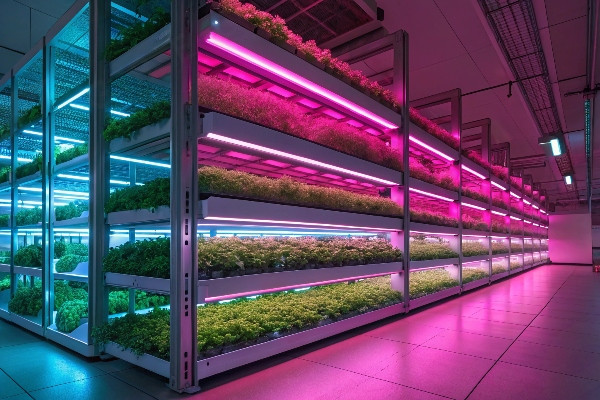
Hydroponics Explained: Can You Really GrowMore With Less In Your Greenhouse?
The allure of high-tech agriculture is strong. I get calls every week from entrepreneurs excited about starting a vertical farm or a fully automated light deprivation facility. These technologies are amazing, but they are also incredibly expensive to build and operate. The first thing I always do is shift the conversation from the technology itself to the business case behind it. Technology is a tool, not a goal. The real question is whether this specific tool will provide a return on investment in your specific market.
I worked with a client who wanted to build a large-scale vertical farm to grow lettuce in a suburban area. On paper, it looked great. He could produce a huge amount of food in a small footprint. But we sat down and ran the numbers. We calculated the cost of electricity for the LED lights, the advanced HVAC systems needed to remove the heat from those lights, and the high cost of skilled labor to manage the complex systems. When we compared that to the price he could realistically sell his lettuce for at the local market, the numbers did not work. His operational costs were simply too high. We ended up designing a highly efficient, but more conventional, multi-span hydroponic greenhouse for him. It had a larger footprint but much lower energy costs, which made his business model viable.
On the other hand, light deprivation systems1 are a perfect example of a high-tech investment that pays off for the right crop. We have many clients who grow high-value medicinal plants or specific flowers like chrysanthemums. These plants require precise light cycles to trigger flowering. By using automated blackout curtains, our clients can control the "day length" inside the greenhouse. This allows them to induce flowering on command and schedule multiple harvests per year, something that would be impossible in a conventional greenhouse. For them, the high initial investment in the light deprivation system is quickly paid back by the increased number of harvests and the premium price their crop commands. It all comes back to matching the technology to the crop and the market.
Comparing High-Tech and Traditional Models
| Greenhouse Model | Primary Use | Key Investment | Operational Consideration |
|---|---|---|---|
| Traditional Greenhouse | General vegetable, fruit, and ornamental production. | Structure, covering, basic heating and ventilation. | Relies on natural sunlight; heating and cooling costs are major factors. |
| Light Deprivation | Photoperiod-sensitive crops (e.g., cannabis, chrysanthemums). | Automated blackout curtain system, powerful ventilation for when curtains are closed. | Allows for multiple, scheduled harvests per year, increasing revenue potential. |
| Vertical Farm | Leafy greens, herbs, and microgreens, typically in urban areas. | Multi-level racking, LED lighting, precise HVAC, advanced fertigation systems. | Extremely high energy costs; land cost must be very high to justify the model. |
Conclusion
There is no single best greenhouse. The ideal choice is a customized solution that perfectly aligns your crops, your climate, and your business goals for long-term, sustainable success.
Learn how light deprivation systems can maximize harvests and profits for specific crops like cannabis and chrysanthemums. ↩

